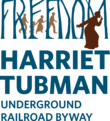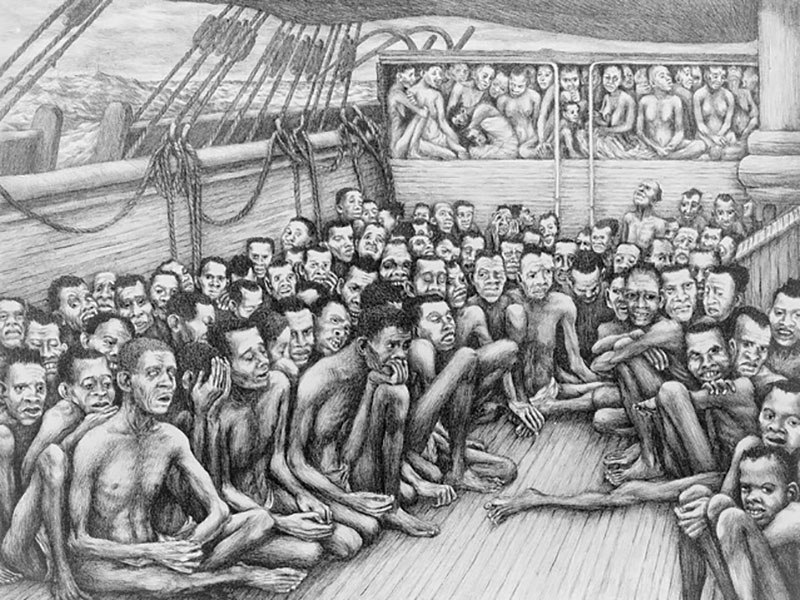John H. Miller, PhD, will be the speaker on “Amazing Grace:” Sailing into Slavery, Sailing into Freedom” at the Richardson Maritime Museum on Saturday, June 24, from 1 to 2 pm at 401 High Street, Cambridge, MD. Admission is free.
Miller’s talk is based on research for a course he taught as one of some 35 faculty during the University of Virginia’s Semester at Sea program aboard the student ship MV World Odyssey during its four-month 2015 voyage of Atlantic exploration. During this journey about 400 undergraduate students from the USA and abroad took for-credit courses on various subjects while sailing to ports in the Mediterranean, West Africa, and across the Atlantic’s infamous “Middle Passage” to Brazil, and onward to the Caribbean, through the Panama Canal, and ending in San Diego.
We are all familiar with then-enslaved Frederick Douglass’s famous ode to the white sails of vessels on Chesapeake’s Eastern Bay that he hoped would one day sail him into to freedom from bondage in Talbot County. But few of us are familiar with the lesser-known words of then-free Ibo tribesman Olaudah Equiano who later recorded his horror on being captured and then seeing the white sails of a large ship off the Bight of Benin, a ship that would sail him into slavery in the supposed “El Dorado” of the New World.
Miller will discuss the shared experiences that enmeshed all aboard these “Guineamen,” a euphemism for slave ships. From the ruthless, all-powerful captains of these vessels and their motley down-and-out crews to the enslaved African “cargo” held ‘tween decks, all aboard descended into hell. One of these captains was John Newton, a man who later repented of his voyages aboard slave ships, became an Anglican minister, and wrote the world-famous hymn, Amazing Grace. “Whatever ‘amazing grace’ may have come from the international slave trade,” says Miller, “can be found in the even lesser-known and extraordinarily poignant stories about personal post-voyage encounters between slave ships’ crews and their ‘cargo.’” On a more local level, Miller will also explore aspects of the “maritime underground railroad” that operated along America’s mid-Atlantic during the 19th century, including the story of the schooner Pearl.
John H. Miller received his PhD from the University of Pittsburgh and his BA from Yale College. He currently co-facilitates literature courses with his colleague, John Ford, at the Academy for Lifelong Learning at the Chesapeake Bay Maritime Museum, where Miller formerly served as Vice President of Advancement.
The presentation at the Richardson Maritime Museum has been planned in concert with the Choptank River Lighthouse, located just down High Street on the waterfront at Long Wharf Park. On the same day as Miller’s talk, the Lighthouse is opening a new exhibit titled, “View from the Lighthouse: The Underground Railroad.”
Housed on the second floor, that exhibit looks out over the scenes visible in all four directions from the Lighthouse and shows how they relate to the stories of Dorchester Country native Harriet Tubman and other passengers and conductors on the Underground Railroad with local roots.
The Lighthouse will be open to visitors on June 24 in the hours before and after “Amazing Grace” at the Richardson Museum. In addition, the Harriet Tubman Museum and Educational Center in downtown Cambridge will be open to visitors that day as well. That museum is located at 424 Race Street, just two blocks from the Richardson Museum.
ADDRESS of RICHARDSON MUSEUM: 401 High St., Cambridge, MD 21613


